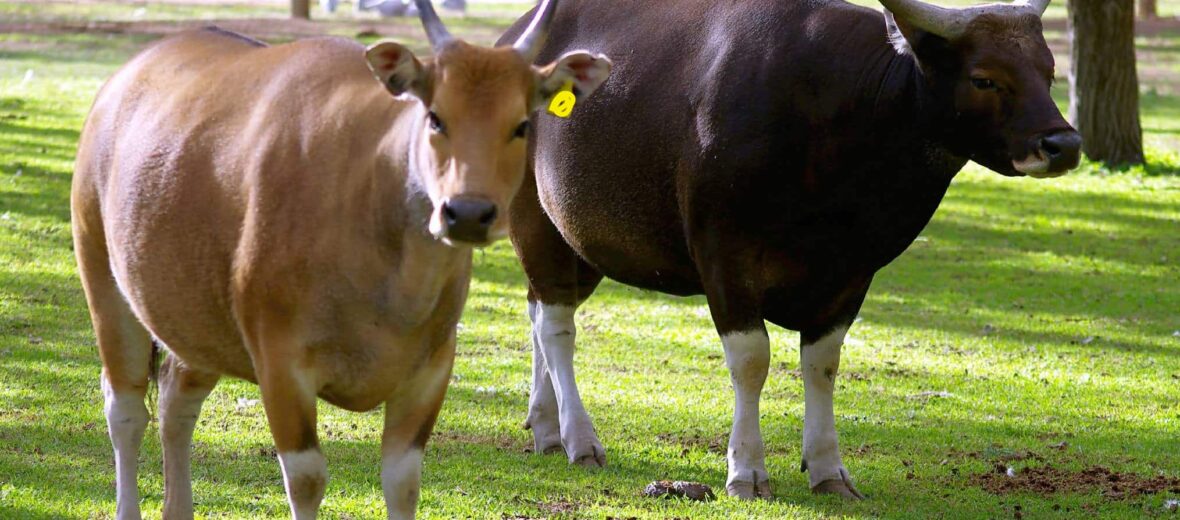
The banteng, aka Bali cattle or tembadau, is a bovine that looks much like a domestic cow. They can be found throughout southeast Asia. These critters prefer dry and open deciduous forests with plenty of grassy vegetation. Sadly, due to habitat destruction and disease, these peaceful bovines are listed as Endangered by the IUCN and their populations are decreasing. There are only around 8,000 left in the wild. This article is on special request by Shawn.
First the Stats…
Scientific name: Bos javanicus
Weight: Up to 1,400 lbs.
Length: Up to 6.8 feet
Lifespan: Up to 20 years
Now on to the Facts!
1.) They graze seasonally on grasses, shrubs, fruits, leaves, and bamboo. During the monsoon season, they tend to eat more herbaceous plants.
2.) These gentle beasts are preyed on by tigers and dholes.
3.) Bantengs can be found throughout Indonesia, Cambodia, Malaysia, Lao People’s Democratic Republic, Myanmar, Thailand, and Vietnam.
4.) There are 3 known subspecies of banteng alive today: Burma, Java, and Borneo.
5.) Just like domestic cows, they have a 4 chambered stomach, which is needed in order to digest the tough vegetation they consume.
But wait, there’s more on the banteng!
6.) Males are called bulls, females are called cows, and babies are called calves.
7.) Humans are their biggest predator. Hunting them for their meat and horns.
Did you know…?
A banteng’s head shows as 1 of the 5 emblems in the shield of Indonesia’s coat-of-arms.
8.) Females birth a single calf each May – June.
9.) Domestic bantengs are called Bali cattle.
10.) The banteng is only the 2nd endangered species to be successfully cloned, and the 1st to survive past infancy.
Now a Short Banteng Video!
Also, check out the Critter Science YouTube channel. Videos added frequently!
Want to suggest a critter for me to write about? Let me know here.



